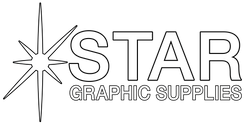PMS Reference Color Chart
What is the Pantone Matching System (PMS)?
The Pantone Matching System (PMS) is a standardized color reproduction system used worldwide by printing professionals, graphic designers, and manufacturers. Each PMS color is assigned a unique number, making it easy to reference and match specific colors across different materials and printing processes.
This PMS color chart serves as a quick reference guide for identifying Pantone colors and their corresponding values. Whether you're matching brand colors, selecting spot colors for printing, or specifying colors for packaging, this chart helps ensure accurate color reproduction.
How to Use This PMS Color Chart
- Color Matching: Find the closest Pantone color to your desired shade
- Reference Numbers: Use PMS numbers to communicate exact colors with printers
- Print Specifications: Specify spot colors for offset printing, screen printing, and other processes
- Brand Standards: Maintain consistent brand colors across all printed materials
Pantone Color Types Explained
Coated (C) vs Uncoated (U)
Pantone Coated (C): Colors as they appear on coated paper stocks (glossy, smooth finish). Coated papers produce brighter, more vibrant colors due to the ink sitting on top of the coating.
Pantone Uncoated (U): Colors as they appear on uncoated paper stocks (matte, textured finish). Uncoated papers absorb more ink, resulting in softer, more muted tones.
Always specify whether you need coated or uncoated Pantone colors when ordering printing to ensure accurate color matching.
PMS Spot Color vs CMYK Process Color
When to Use PMS Spot Colors:
- Brand color consistency is critical
- Limited color palette (1-3 colors)
- Metallic or fluorescent colors needed
- Printing on colored or specialty substrates
When to Use CMYK Process Colors:
- Full-color photos and images
- Complex color gradients
- Cost-effective for multi-color jobs
- Digital printing applications
|
